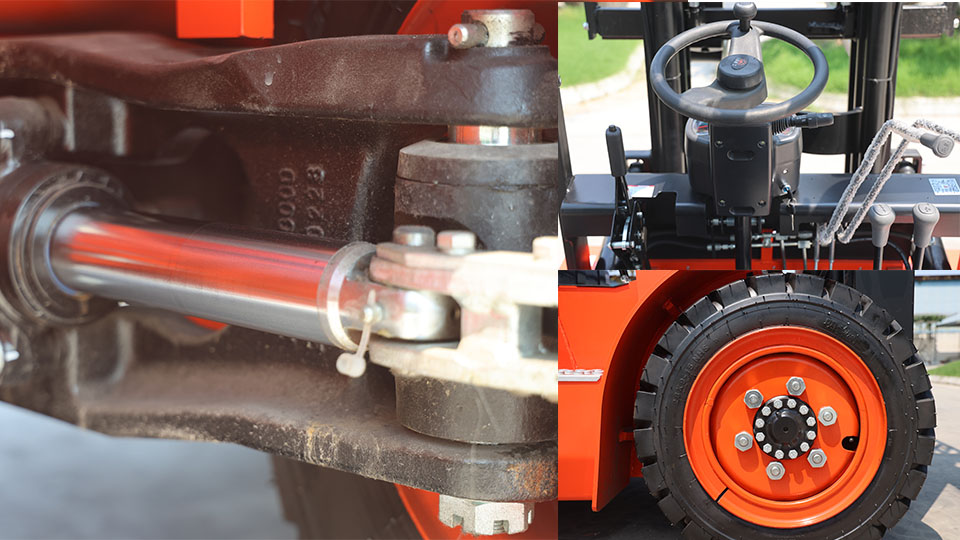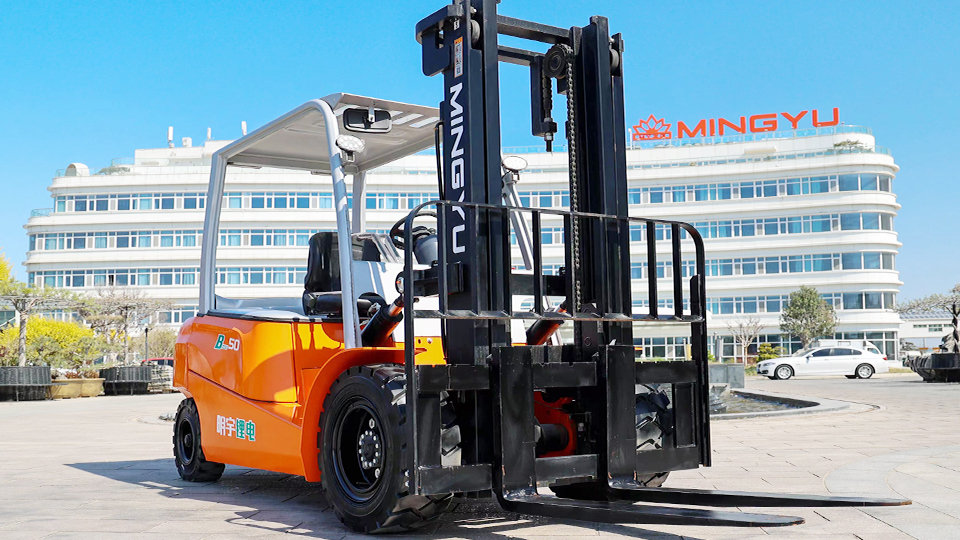
The Electrochemistry of Power: Quantifying Sulfuric Acid in a Forklift Battery
Abstract
The industrial electric forklift, a ubiquitous tool in logistics and material handling, relies on robust Lead-Acid (Pb-Acid) batteries for its operation. The power storage capacity of these batteries is fundamentally determined by the chemical reaction between lead plates and an aqueous electrolyte. This electrolyte, an approximately 30-40% (by mass) solution of sulfuric acid (H
O), is the very heart of the energy conversion process. Quantifying the amount of sulfuric acid within a forklift battery is not a trivial calculation; it depends on the battery's Ampere-hour (Ah) capacity, the number of cells, the specific gravity of the electrolyte, and the total volume within the battery's housing. This technical article will rigorously detail the methodology for calculating the total mass and volume of sulfuric acid in a typical industrial forklift battery, exploring the underlying electrochemical principles, the relevant engineering specifications, and the practical implications for maintenance and safety.
1. Introduction to the Industrial Forklift Battery
1.1 Battery Architecture
An electric forklift battery is an assembly of multiple individual electrochemical cells, typically 18 to 36 cells, connected in series to achieve the required nominal voltage (e.g., 36V, 48V, or 80V). Each cell produces a nominal voltage of approximately 2.0 to 2.2 Volts.

The basic components of each cell are:
Negative Plate: Pure lead (Pb). is regenerated, and the electrolyte SG increases.
2. Technical Specifications and Initial Calculation Parameters
Quantifying the acid requires specific technical data typically not listed on the battery label in a
2.2 Standard Electrolyte Composition
The concentration of the electrolyte is the most critical factor. For a fully charged industrial traction battery, a typical SG
)
1.280 ≈37.2% ≈1.83 g/mL (Pure) 1.00 g/mL (Pure)
3. The Calculation Methodology
The total mass of sulfuric acid (M
acid
) is calculated by determining the total mass of the electrolyte (M
electrolyte
) and then multiplying by the acid concentration by mass (C
mass
3.1 Estimating Total Electrolyte Volume (V
electrolyte )
Unlike an automotive battery, the industrial forklift battery is designed with a high ratio of electrolyte volume to plate area to support deep cycling and long life. The total volume of electrolyte is not fixed but is strongly correlated with the battery's Ampere-hour (Ah) capacity.
Rule of Thumb (Engineering Estimate): A common industrial engineering approximation is that a typical Pb-Acid cell requires approximately 3.5 to 5.0 mL of total electrolyte volume per Ampere-hour (Ah) of rated capacity. The higher end of this range is often used for deep-cycle traction batteries.
Let's select a representative industrial battery for calculation:
=51.45 kg/1.83 kg/L=28.1 Liters
Summary of Calculation for a 48V,1000 Ah Battery:
Parameter Value Unit
Total Electrolyte Volume (V
total) 108.0 Liters
Total Electrolyte Mass (M
electrolyte) 138.2 kg
Total Sulfuric Acid Mass (M
acid ) 51.5 kg
Equivalent Pure H
Volume (V
acid, pure ) 28.1 Liters
4. Factors Affecting the Calculated Amount
The calculation above provides a precise technical estimate based on the chosen parameters. In a real-world scenario, the actual amount of sulfuric acid varies due to several operational and design factors.
4.1 State of Charge (SOC)
The amount of free sulfuric acid in the electrolyte is directly dependent on the State of Charge (SOC).
100% SOC: SG≈1.280. All the calculated acid mass is present in the electrolyte solution.
0% SOC (Fully Discharged): SG≈1.140. A significant portion of the H
2
has reacted with the plates to form PbSO
. While the total mass of H
in the system remains constant (conserved), the concentration of H
in the liquid electrolyte decreases dramatically, replaced by water.

4.2 Electrolyte Level and Maintenance
The calculation assumes the electrolyte is at the proper level (just above the separators). During use, water is consumed through electrolysis (gassing) during the charging process. If an operator fails to water the battery, the volume of the electrolyte decreases, and the specific gravity increases (though the total H
mass remains constant). This lack of maintenance will skew calculations based on volume, but it does not change the total H
mass present in the system, only its concentration.
4.3 Manufacturer Design and Geometry
Different manufacturers (e.g., Exide, Enersys, HAWKER) use slightly different cell designs, plate thickness, and electrolyte head space, leading to variations in the F
V/Ah
factor (3.5 to 5.0 mL/Ah). A battery designed for extremely deep discharge or high-rate capability might have a larger electrolyte volume for thermal regulation, slightly increasing the H
mass.
5. Industrial and Safety Implications
Understanding the quantity of sulfuric acid is critical for safety, regulatory compliance, and proper maintenance.
5.1 Safety and Hazmat Concerns
The quantity of H (e.g., 51.5 kg in the example) is a significant hazardous material inventory.
Chemical Burns: The 30% to 40% concentration is highly corrosive and poses a severe splash hazard.
Regulatory Compliance: Facilities must comply with local, state, and federal regulations regarding the storage and handling of large quantities of, which often triggers requirements for secondary containment, eyewash stations, and specialized spill response training.
5.2 Electrolyte Management and Maintenance
Battery maintenance involves only adding de-ionized or distilled water to compensate for electrolysis loss. Acid is never added unless a cell has been physically spilled or replaced. The calculation confirms why this is true: the H
is a reactant that is fundamentally recycled within the closed system (plate ⇌ electrolyte). Adding acid unnecessarily would increase the SG, causing a premature capacity fade and potential corrosion of the lead grids.
6. Conclusion
The calculation of the sulfuric acid content in a forklift battery reveals the immense chemical energy potential housed within a single power unit. For a representative 48V,1000 Ah industrial battery, the total mass of sulfuric acid (H
) is estimated to be approximately 51.5 kilograms, which corresponds to an equivalent volume of 28.1 liters of pure acid.
This quantification is more than a theoretical exercise; it underpins engineering design, guides maintenance practices (specifically, the addition of only water), and, most importantly, dictates the stringent safety protocols required for the handling, charging, and storage of these essential industrial power sources. The industrial lead-acid battery is a marvel of electrochemical engineering, where a carefully quantified volume of a potent corrosive agent is the driving force behind material handling logistics worldwide.
Name: selena
Mobile:+86-13176910558
Tel:+86-0535-2090977
Whatsapp:8613181602336
Email:vip@mingyuforklift.com
Add:Xiaqiu Town, Laizhou, Yantai City, Shandong Province, China